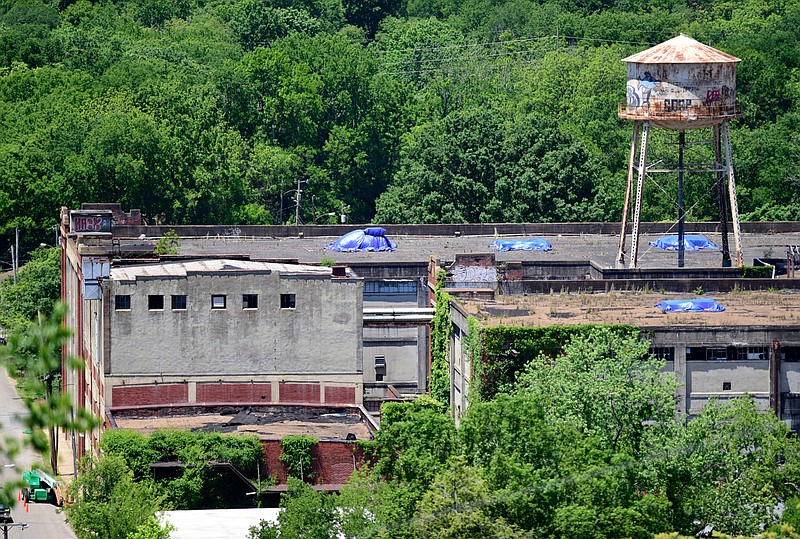The development, it was said at the time, would offer a rooftop terrace with stunning views of Lookout Mountain, an interior garden and perhaps a gallery space, dance, painting, music and rehearsal studios, and community spaces.
Tenant income levels would be restricted to 60% of the area average median income.
It was hoped the project, focused on artists, would spark similar developments nearby, along with attendant businesses, remaking an entire community from the many unused and underused buildings in the area.
That was nearly five years ago, and the development was called the Standard-Coosa Arts Lofts.
It never happened.
Later this month, according to a Times Free Press report, 70 houses across from the former Standard-Coosa-Thatcher textile mill will be started. Over the next five or six years, more than 350 new, single-family home and apartment units will be built. And the former mill, which was to have housed the artist lofts, will be transitioned into office, retail and residential use.
According to developer Ethan Collier, who bought the buildings in 2019, at least 20% of the housing in what's to be called Mill Town will be targeted - with help from Chattanooga Neighborhood Enterprise (CNE) and the Benwood Foundation - to people with incomes that are 50% to 80% of the median income in the city.
The first two-bedroom townhomes will start around $250,000, three-bedroom townhomes will go for $300,000 and up, and, eventually, detached, single-family homes will be priced even higher.
We can't imagine how wonderful it would be if a bright, shiny, new neighborhood grew in what is said to be a nearly 10-block former industrial site. Maybe, like the hoped-for lofts, it would spur similar developments, retail shops and a grocery store. It would continue the revitalization of the once forgotten Main Street corridor.
But how much will it alleviate what is said to be a desperate need for affordable housing in the area between Missionary Ridge and the Tennessee River?
For instance, are the prices developers are floating affordable?
Well, here are some figures: The median household income for Chattanooga, according to the U.S. Census Bureau, is $45,527. Experts say you should be able to pay around 28% of your income for your monthly mortgage payment (principle, interest, taxes and insurance). So someone making $45,527 per year should be able to pay a maximum of $1,062.30 monthly. Most online loan calculators say a $250,000 mortgage, obviously depending on factors such as interest rate, how much money is put down, property taxes and insurance costs, will require more than $1,062.30 per month.
Plus, the median household income for the area in which the project will be developed is $33,471, so the chances of the average person who is renting in the immediate area buying one of the new homes are not good, either.
However, CNE and the Benwood Foundation are partnering with Collier, so other financial resources may be available for those making only 50% to 80% of the city's median household income.
This is in no way meant to dissuade this project or any future project, but we think when political candidates or elected officials talk about "affordable housing," they may not be on the same page as developers, who are willing to have part of their projects available for people with certain percentage of incomes. But the same people who need what the elected officials say is "affordable housing" actually may not come close to being able to buy the discounted homes a developer plans to offer.
That conundrum is not necessarily the fault of either one. Candidates and elected officials tout the need for "affordable housing," because they hear the desire for it from the public. The public wants something nicer than they have for the same money or less. It's human nature. The developer is willing to help, but he must deal with the skyrocketing prices of materials and still try to make a profit, albeit a thin one. And if his profits are consistently thin, he soon may be in the same boat as the people looking for affordable housing.
That's not to say there aren't solutions, but they're not easy and they're not quick. Often, they involve the weaving of federal, state and local programs with a willing developer or creative rehabber. Chattanooga Mayor Tim Kelly also has talked about leveraging the city's land bank and the built-on properties it owns.
We hope Mill Town becomes the success the Standard-Coosa Arts Lofts never did and that it becomes an example of what can be done involving folks of various incomes in former industrial spaces. In the meantime, we hope other collaborative and creative housing efforts across the city begin to bear fruit.
